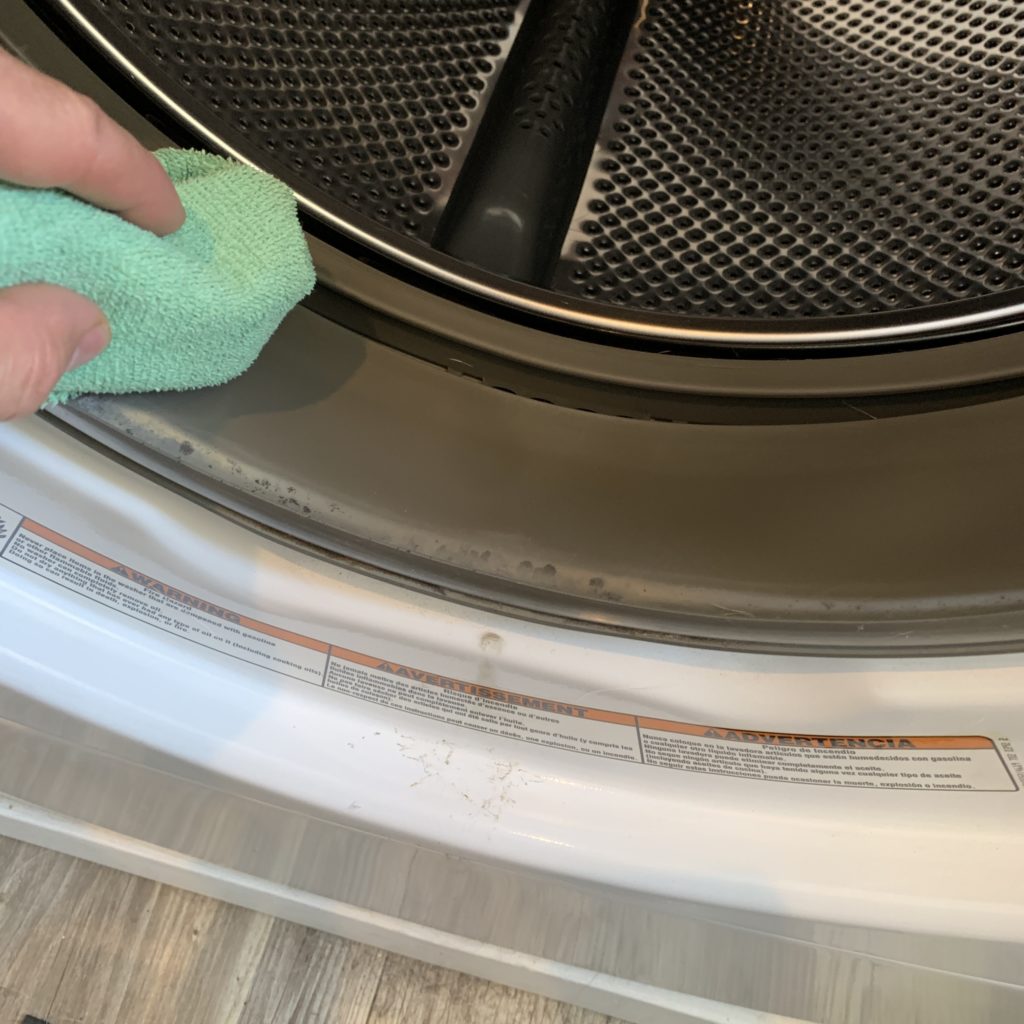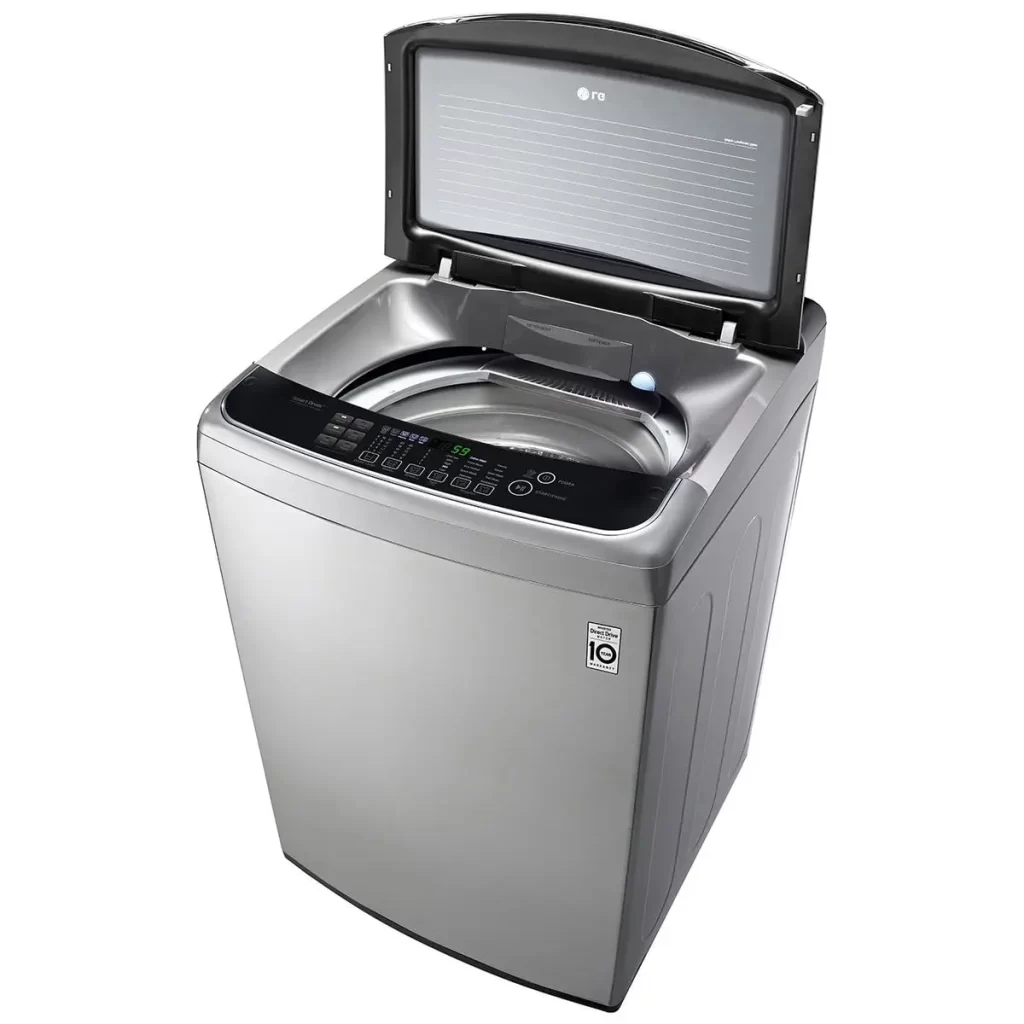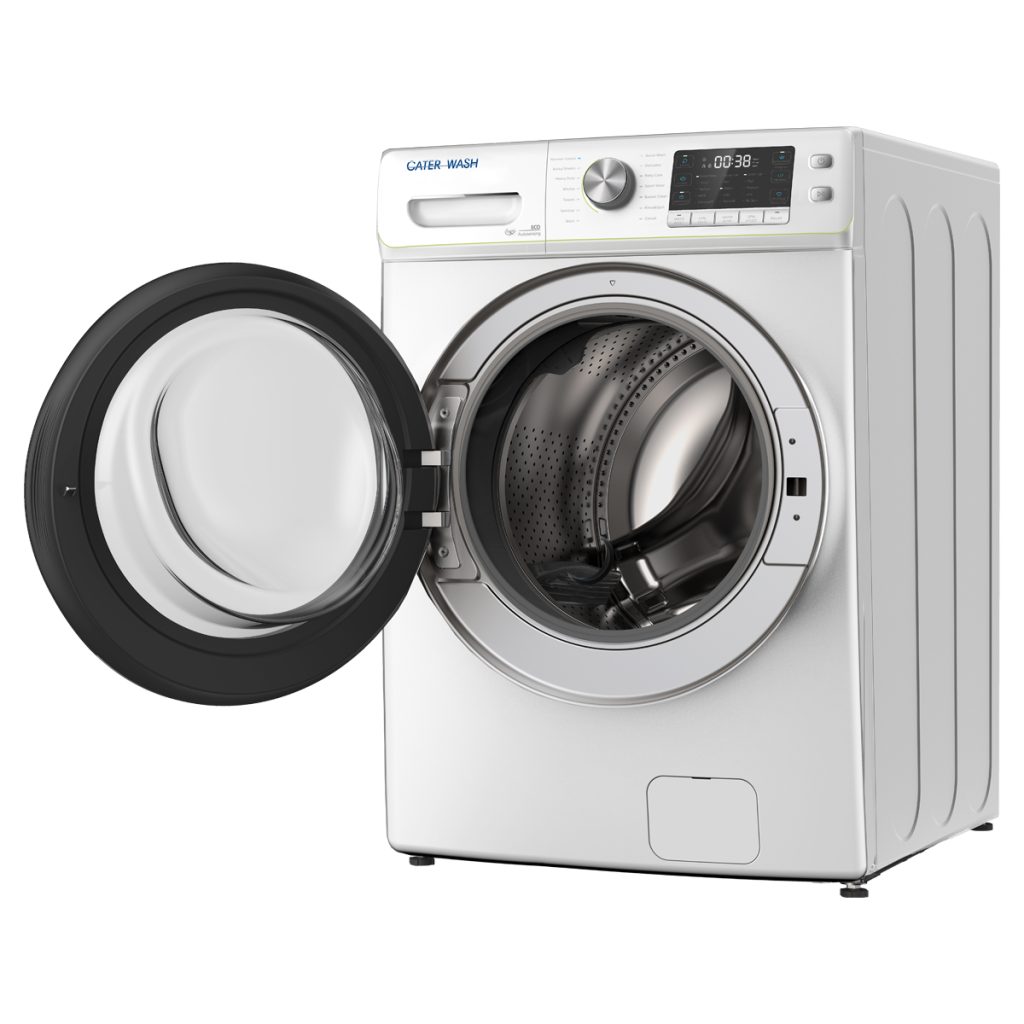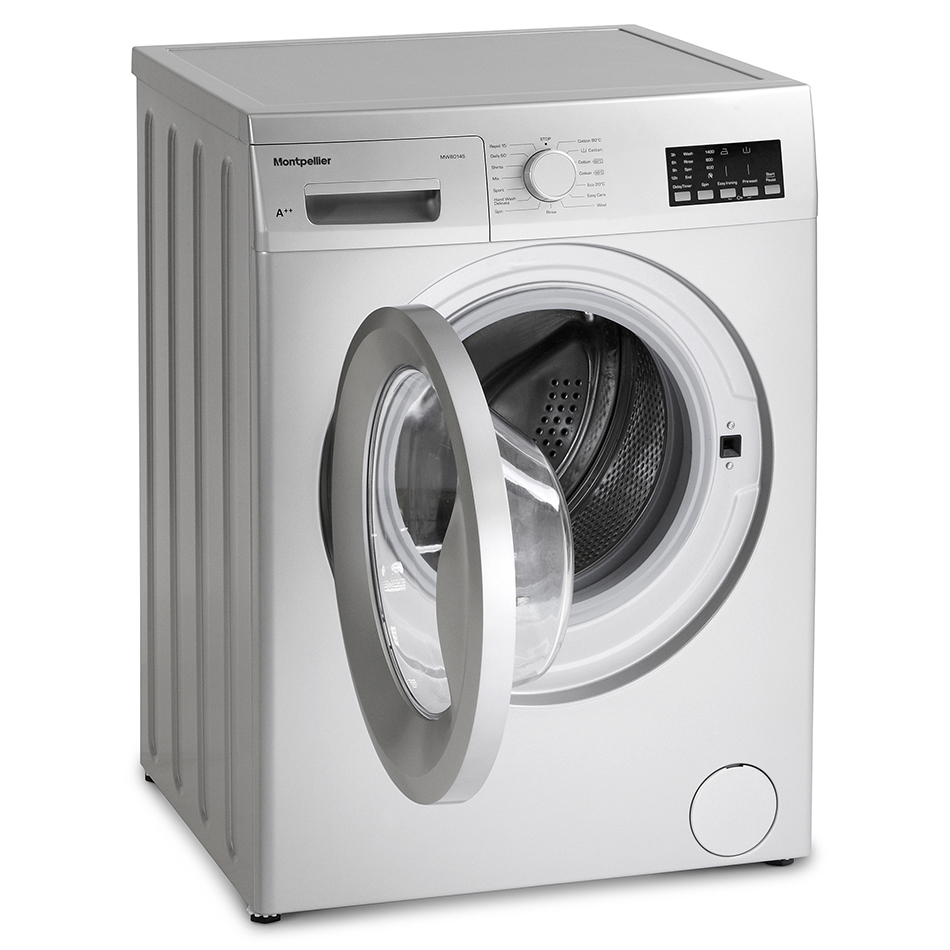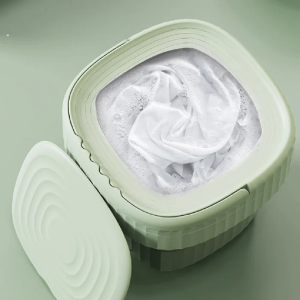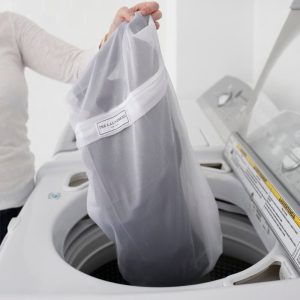Mold in Washing Machine Rubber? Here’s How to Clean It
Identifying Mold in Your Washing Machine Seal
Discovering mold in your washer can be unsettling, but recognizing the problem is the first step towards a cleaner and more hygienic laundry routine. Mold in the rubber seal of your washing machine can manifest as dark, speckled staining or a distinct musty odor that remains after a wash cycle. This is a common issue in many households, especially those with front-loading washing machines where the rubber seal forms an airtight closure, trapping moisture inside.
If you notice such signs, it’s time to put on your cleaning gloves and get to work. But before we dive into the cleaning process, let’s understand what causes mold to grow in such a stubborn way on the washing machine seal.
Common Causes of Mold Growth in Washing Machine Seals
Mold thrives on moisture and darkness, which is why the washing machine rubber seal is a prime breeding ground for this pesky fungus. But what exactly leads to this environment? Here are a few culprits:
- Wet Environment: After every wash cycle, water and humidity linger around the seal, creating a perfect habitat for mold.
- Detergent and Fabric Softener Residue: These can accumulate over time, offering mold a rich food source to grow on.
- Low-Temperature Cycles: Washing at lower temperatures may be eco-friendly and gentle on fabrics, but it doesn’t always get rid of mold spores effectively.
- Poor Ventilation: If your laundry space lacks good airflow, it can contribute to higher humidity levels, exacerbating the mold issue.
- Foreign Objects: The occasional small item or even excess lint can get trapped in the seal, further encouraging mold to set up shop.
By understanding these common causes, you can begin to tackle mold at its source. Combine this knowledge with the following cleaning and preventive methods, and you’re well on your way to maintaining a mold-free washing machine seal.
Effective Cleaning Techniques for Mold Removal
Tackling mold in the rubber gasket of your washing machine not only requires keen observation but also an effective cleaning approach. With the right techniques, you can eradicate mold and prevent it from returning, ensuring your clothes remain fresh and your machine operates efficiently. Let’s explore some of the most effective methods for removing mold from your washing machine seal.
Specialized Cleaners and Their Usage
When ordinary cleaning routines fail to eliminate mold in washing machine rubber, turning to specialized cleaners can make a significant difference. Here’s how you can use commercial mold removers to your advantage:
- Opt for a dedicated mildew remover. Look for products designed for washing machines, ensuring they are tough on mold yet safe for the appliance.
- Don protective gloves to avoid contact with harsh chemicals.
- Directly spray or apply the cleaner onto the rubber seal, paying special attention to stains and hidden crevices.
- Utilize a soft-bristled brush or clean cloth to scrub the seal gently, targeting the mold-infested areas.
- For persistent stains or heavy mold buildup, leave the cleaner on the seal for the amount of time specified in the product instructions, then wipe and rinse thoroughly.
Regularly using specialized cleaners can prevent mold from taking hold in your washer, keeping your rubber gasket free from unsightly and harmful spores.
Natural Alternatives for Mold Removal
If you prefer eco-friendly methods or wish to reduce your usage of chemicals, natural alternatives might be the right choice. Here are some tips:
- Combine equal parts of white vinegar and water in a spray bottle to create a simple yet effective mold-killing solution.
- Spray liberally onto the seal and allow the mixture to penetrate the mold for several minutes.
- Scrub gently with a clean cloth or soft brush, taking care not to damage the rubber.
- After scrubbing, let the vinegar solution sit for about 15 minutes before wiping clean.
- Rinse the area with water and dry it thoroughly to prevent moisture from lingering.
Natural products like vinegar are useful for dealing with surface mold, might need to be used more frequently than commercial products to effectively manage mold growth.
Running a Sanitizing Cycle to Remove Mold
In addition to manual cleaning, your washing machine’s sanitizing cycle can be an asset in your fight against mold. Here’s how to use this feature effectively:
- Ensure your washer is empty and select the sanitizing cycle or the highest temperature wash setting available.
- Add a cleaning agent that complements the sanitizing cycle, such as a cup of bleach, baking soda, or an enzymatic detergent designed for high-temperature washes.
- Once the cycle is complete, leave the door ajar to allow the machine to air out and prevent excess moisture.
Running a sanitizing cycle monthly or as needed can penetrate areas that might be missed during manual cleaning, offering an additional layer of protection against mold. Combine these cleaning techniques to maintain a hygienic environment within your washing machine and ensure the longevity of your appliance.
Preventive Measures to Keep Mold at Bay
Cleaning techniques are vital in addressing mold issues in your washing machine’s rubber seal. However, prevention is even more critical to ensure this annoying problem doesn’t return. Adopting consistent and effective preventive tactics will save you time and extend the life of your washing machine. Here’s what you can do to keep mold at bay in your washing machine rubber.
Regular Cleaning and Maintenance Strategies
1. Monthly Inspections and Cleaning: Make it a habit to inspect and clean your washing machine’s rubber seal at least once a month. Use a mixture of water and a mild detergent to wipe down the gasket, removing any visible residue.
2. After-Use Care: Always leave the washing machine door and detergent drawer slightly open after each use to allow air circulation and drying. This simple act can significantly reduce the opportunity for mold to grow.
3. Remove Wet Clothes Promptly: Don’t leave damp clothes sitting in the machine for long periods, as this contributes to a moist environment. Transfer laundry to the dryer or hang it up to dry as soon as the washing cycle is complete.
4. Cleaning Agents: Incorporate anti-mold agents into your routine cleaning. Once in a while, run an empty wash cycle with a cleaner specifically designed to tackle mold, like those containing enzymes or oxygen bleach.
5. Use the Right Amount of Detergent: Overusing detergent can lead to a buildup of residue that mold can feed on. Read labels and use the recommended amount to prevent excess suds and residue.
Tips for Keeping Your Washing Machine Dry and Mold-Free
To ensure your efforts in cleaning the washing machine’s rubber seal are long-lasting, follow these additional guidelines.
1. Wipe Down After Each Wash: Post-wash, take a few moments to wipe the seal dry with a clean towel. This removes any leftover moisture, making the environment less conducive to mold growth.
2. Adequate Ventilation: Ensure your laundry room is well-ventilated. A dehumidifier can be beneficial if you live in a high humidity area to keep the air dry and discourage mold formation.
3. Regular Use of High-Temperature Washes: From time to time, wash a load on a high-temperature setting. This aids in killing any lurking mold spores that could potentially grow into a bigger problem.
4. Check for Trapped Items: Periodically check the rubber seal for small trapped items, such as hair or lint, and remove them to prevent these from holding moisture and encouraging mold.
5. Deep Clean the Entire Machine: Don’t just focus on the seal; make sure to give the entire washing machine a thorough cleaning periodically. Follow your washing machine’s manual for guidance on how to clean and maintain all parts of the appliance properly.
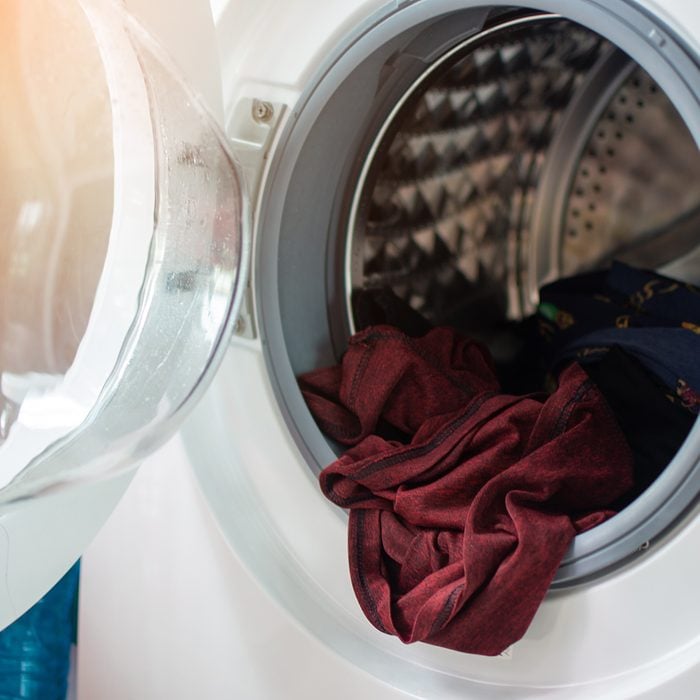 Monitor for Recurrence
Monitor for Recurrence
Even with thorough cleaning and preventive measures, it’s crucial to monitor for mold recurrence. Regularly check the rubber gasket and other parts of your washing machine for any signs of mold or unusual odors. Early detection allows for prompt action.
If mold returns despite your efforts, revisit your cleaning and preventive strategies, possibly incorporating stronger cleaning agents or more frequent cleanings. Persistence in monitoring ensures any mold issues are quickly addressed, maintaining a clean and efficient washing machine.
Professional Help
If mold issues persist despite all efforts, it may be time to seek professional help. A qualified technician can thoroughly inspect and clean your washing machine, addressing areas that might be difficult to reach on your own. They can also provide insights into more advanced preventive measures.
Professional intervention can save time and effort, ensuring your washing machine remains in optimal working condition. Expert advice and service can be invaluable in maintaining a mold-free, efficient appliance. When necessary, seeking professional help is a wise decision in your maintenance journey.
Final Thoughts
By following these maintenance strategies and tips, you ensure your washing machine remains a mold-resistant, clean, and safe appliance for your laundry needs. Remember that regular preventive care can significantly reduce the chances of mold recurring and ensure your washing machine stays in peak condition for years to come.
